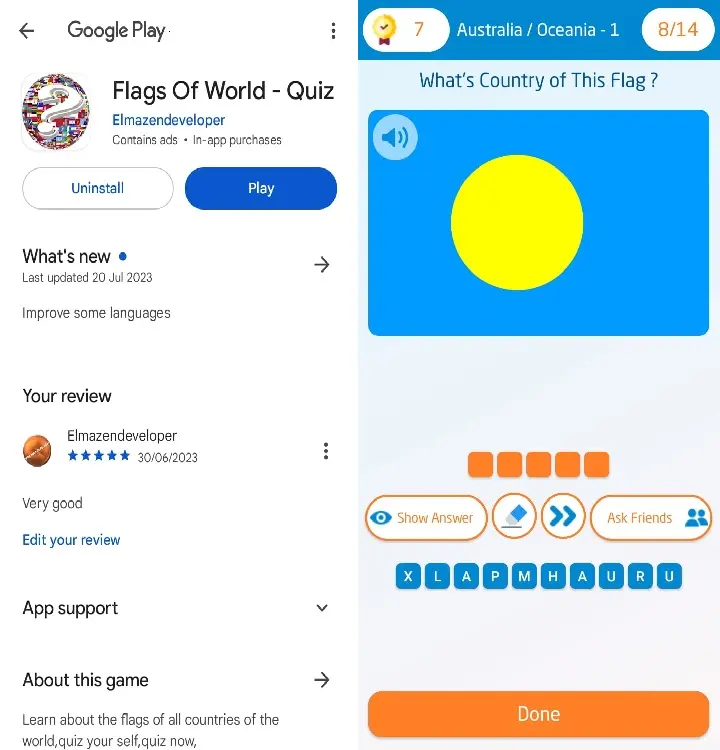Flag of Palau
Flag of Palau, Currency, Population, Tourist Places, Borders, Culture
Discover Palau: A Jewel of the Pacific
Palau is a small but captivating island nation in the Pacific Ocean, boasting breathtaking landscapes, rich cultural heritage, and unique traditions.
Let’s dive into some interesting facts about this tropical paradise!
Flag of Palau

Download the application  Flags Of World - Quiz ,
Flags Of World - Quiz ,
And test your knowledge with Flags of World ,
1. Population of Palau
As of November 2024, Palau has a population of approximately 17,680 people, making it one of the least populated countries in the world.
The majority of Palauans reside on Koror Island, which is the country’s economic and governmental hub.
2. The Palau National Flag and Its Meaning
Palau's flag is a simple yet meaningful design.
It features a light blue background with a golden-yellow disc slightly off-center to the left.
- Light Blue Background: Represents the vast Pacific Ocean surrounding the islands, symbolizing freedom and peace.
- Golden Disc: Symbolizes the full moon, which is deeply significant in Palauan culture.
The moon is considered a symbol of harmony and is important for activities like fishing and farming.
3. Palau’s Currency
Palau does not have its own currency.
Instead, it uses the United States Dollar (USD) as its official currency.
This is due to Palau’s close economic and political relationship with the United States.
Flag of Palau

Download the application  Flags Of World - Quiz ,
Flags Of World - Quiz ,
And test your knowledge with Flags of World ,
4. Palau’s Borders
Palau is an island country with no land borders, but it is surrounded by the Philippine Sea and the Pacific Ocean.
Its nearest neighbors include:
- Philippines (to the west)
- Indonesia (to the south)
- Federated States of Micronesia (to the east and north)
5. Culture of Palau
Palauan culture is a vibrant mix of indigenous traditions, influences, and modern practices.
Here are some highlights:
- Language: Palauan and English are the official languages.
- Traditions: Traditional ceremonies, dance, and storytelling play a vital role in preserving history and values.
- Cuisine: Palauan cuisine features fresh seafood, taro, and tropical fruits, often blended with Japanese and Filipino influences.
- Community: The extended family is highly valued, and traditional governance through chiefs still plays a significant role in local affairs.
- Art: Palauan art, including storyboards carved from wood, reflects the country's myths and history.
6. Best Places to Visit in Palau
Palau is a haven for nature lovers, divers, and history buffs.
Some must-visit places include:
- Rock Islands: Over 300 limestone islands with crystal-clear waters, ideal for kayaking and snorkeling.
- Jellyfish Lake: A unique marine lake where you can swim among harmless jellyfish.
- Blue Corner: A world-renowned diving spot teeming with marine life.
- Ngardmau Waterfall: The largest waterfall in Palau, located on Babeldaob Island.
- Belau National Museum: Showcasing Palauan history, art, and culture.
- Stone Monoliths of Babeldaob: Ancient stone carvings believed to be remnants of a prehistoric civilization.
Conclusion
Palau is more than just a destination; it’s a blend of natural beauty, deep-rooted culture, and warm hospitality.
Whether you’re an adventurer, a history enthusiast, or someone seeking serenity, Palau promises an unforgettable experience.
Flag of Palau
